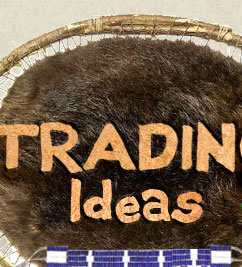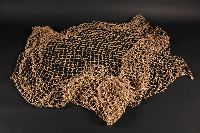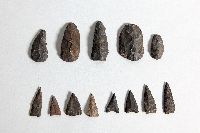Home > The Trade Network > Sought After Items - The Trade Network
Sought After Items
Before the men left their village for the designated trading place, they already knew what they needed to bring back. The priorities were, most often, food and hides to feed and clothe the members of the village. After trading for these essential items, if they had brought surplus goods, they could obtain rarer items or materials, such as native copper.
Usually, what they needed to bring back to the village were things that the group did not produce. The Algonquians did not cultivate plants, so they had to trade with the Iroquoians if they wanted corn or dried beans. For their part, the Iroquoians hunted less than the Algonquians, but still needed to clothe the people of their villages. Therefore they traded to obtain hides. Each group traded their surplus items in exchange for what they did not have.
Among the priority items traded were corn, hides, furs, and smoked meat and fish. They also traded for flint, which was used to make tools.
Rarer objects, which could be compared to today's luxury items, were also traded. Of course, what was considered a luxury then is not necessarily seen as such today. A good example would be wampum beads. They were made in what is now New England and used by most of the First Nations to seal alliances and treaties. With the tools available at the time, a craftworker could make about forty beads a day. A complete wampum belt might have over 1,000 beads! This meant many days of work to produce all the beads for a single belt.
How rare an item was also varied from one nation to another. A birch bark canoe could be worth a great deal to those who had no birch trees on their territory. It was the same for certain furs. It is said that the nations living along the Great Lakes valued the fur of the black squirrel highly. For them, having a coat made of black squirrel fur was a symbol of prosperity.
Can you think of something that is very expensive here because we do not make it in our country?










